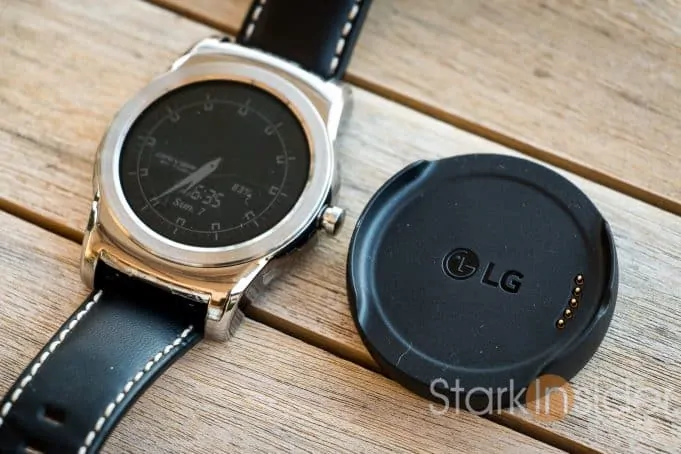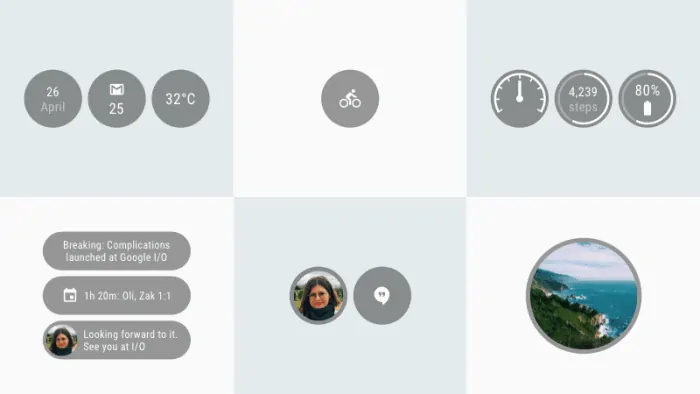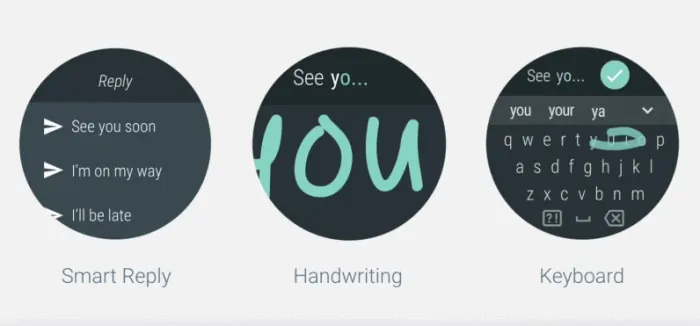“Our biggest [Android Wear] platform update yet.”
Well, how’s that for amazing response time?!
Yesterday, I lamented the need for a reboot of Google’s smartwatch operating system Wear. And Apple’s WatchOS. And Samsung’s Tizen. And… on and on. Save for Pebble’s OS. That one’s a keeper, even if the company’s long-term viability is a little iffy. Talk about standing among giants. Poor Little Pebble!
Team Google must have taken notice of my article on Stark Insider, quickly assembled a team, and burned some midnight oil. Because, today my wish, our wish, came true at the I/O conference at Shoreline in Mountain View. Surprise: Google treated us to a preview of Android Wear 2.0.
What’s new in Wear 2.0?
There’s a few things that jump out, though it would seem many of the details were left out of David Singleton’s keynote to keep the presentation moving along.
Darker UI Theme
Good news here. Ever since I was able to test the Tizen-based Samsung Gear S2 — a pretty decent smartwatch and alternative to Wear and WatchOS — I was enamored with its dark themes. On the S2 most backgrounds are black or shades of grey. That allows text and graphics to really pop. Android Wear, on the other hand, is an extension of Google’s material design philosophy which results in lots of whites. While I think that works well on a smartphone, with its larger display, it can make things harder to read on the wrist, given most smartwatch screens range in size from about 1.2-1.5″ in size. Expect dark backgrounds and more pleasing colors and overall legibility with Wear 2.0.
Bonus: Also look for better battery life thanks to the darker theme.
WATCH: Android Wear 2.0 Tour
Focus on Fitness
We didn’t get much detail on this, but fitness was mentioned as a priority. There’s a practical business reason for that. Fitbit and Garmin are leading all wearable makers. Health is a key app — maybe the killer app? — it would seem for watches and wearables of the future. So, Google probably recognizes it has some catching up to do in this regard. Yes, watches like the Moto 360, ZenWatch 2, Huawei Watch and LG Urbane can all track steps, and some can even track heart rates. But, the results are spotty, and don’t nearly approach the accuracy or consistency of what you’d find in the industry leading fitness trackers.
In addition, a weakness of Wear, or at least a weakness of the partners (LG, Huawei, Motorola, Asus, etc) who make watches based on Wear, is the displays. Great indoors. Abysmal outdoors. Here in Silicon Valley, the sun is annoyingly bright, and frustratingly to us gingers, seemingly burning down on us 7/24. Unless you’re wearing a Pebble forget about trying to read the screen. Motorola did try nothing new though. With its Moto 360 Sport and hybrid AnyLight display, we (almost) get the best of both worlds: sharp, colorful display for the office, and a light-soaking e-ink type display that works well outside. It’s a good watch (but terrible fitness tracker), and demonstrates the future potential for these sorts of hybrid displays.
Finally, on the fitness front on Wear 2.0, watches will recognize when you perform various physical activities — running, lifting weights — and automatically trigger tracking. Very handy. Today, you typically need to “start” these trackers. Not exactly what you’d hope for from a “smart” watch. A welcome improvement.
One wish for the wellness feature set: I wish Wear could automatically track sleep like Pebble does.
Customizable Complications
Much like the Apple Watch, Wear 2.0 will enable customizable complications. This is great, and long overdue. After all, one of the key appeals of a smartwatch is being able to digest quick snippets of information — weather, steps, heart-rate, notifications — at a glance. Up until Wear 2.0, though, we had to mostly rely on third party watchfaces to get these sorts of bells and whistles. Now that Google is standardizing these complications, and allowing faces to pull data from all apps to populate them, upcoming watchfaces should be far more useful.
Keyboard and Handwriting Recognition
I’m not too keen on this one. Why do people want to use their watch to input text? I guess there are times when it’s necessary. Like, maybe when a Cirque performer is hanging 100 feet in the air and needs to text their friend about the after-party? Or, like, when us geeks need to out-do one another and pull off a party trick to end all party tricks? Regardless, you’ll soon have a ridiculously cramped keyboard, and some iffy handwriting recognition (that failed once during the demo… but, kudos for doing it live!). These features are mostly a waste. In my view a smartwatch should complement a smartphone, not try to replicate it.
Android Wear 2.0
Wear 2.0 Developer Preview has five key focus areas:
New User Interface
Material design, darker theme
Standalone Apps
Apps can access network without phone
Watch Face
Watchfaces can pull data from any app to use for complications
Messaging
New input methods: keyboard, handwriting recognition, Smart Reply
Fitness
Automatic activity recognition
Standalone Apps
Future Wear apps will rely less on your smartphone. In fact, many will become autonomous. That’s great for runners, for example, who don’t want to tether their phone awkwardly during a morning jog. Just bring your watch; listen to music, map your run, respond to texts, etc. All possible because apps will run natively on the watch (much like Apple is trying to do with WatchOS). I’m guessing another benefit of these standalone apps will be improved performance.
Smart Replies
Smart replies are just that. They’re smart, they know the context in which you are responding to a text, and offer up appropriate Smart Reply choices: “See you soon”, “I’m on my way”, “I’ll be late” and so on.
Is Wear 2.0 Good Enough?

Given that Google is calling this Wear 2.0, I expected more.
Referring to this update as a “re-boot” might be a bit of a stretch on my part. Rather, this release looks to be evolutionary, especially by Google’s standards. Even the ever-smiling demo persona Alice Yang is still here.
I suspect this has to do with the fact that the smartwatch market was and apparently still is DOA. It’s failing. The sales numbers aren’t there, the channel is stuffed, discounts are on the horizon, and consumers aren’t gravitating to the devices as they did to smartwatches and tablets. I think they’re still on whole decent products. But, this is emerging as a niche play. Expect prices to fall too. I just can’t see how the mainstream buyer is going to pay the same or more for a watch than they are for their phone, just so they can see notifications on their wrist. $99? Now we’re talking.
I’m ever hopeful that Google sorts its dreadful notification system with Android N. There’s the beautiful, crazy double negative that you turn on (off?) when you do want to receive notifications: Do Not Do Not Disturb. Strange that. Then there’s the fact you can’t turn off vibration (at least not on the Nexus 6) without disabling notifications. Please, Google, give us the option to just turn off vibrate (without having to go into each and every single app) and allow those notifications to still come through to our Wear watches.
Baby steps to be sure with Wear 2.0. The market is seemingly far smaller than originally anticipated. That means careful spending on R&D. A wait and see attitude. Fair enough. Meanwhile, Google is touching up Wear here and there, making minor adjustments. Who knows, maybe these tweaks along with lower price points, and more reliable performance will eventually lead to a warmer consumer reception.
Developers can download the Android Wear 2.0 Preview (and Android N) today. Note that the preview can only be flashed on two watches, the Huawei Watch and LG Urbane 2nd Edition. Google says the final version will launch later this year.





